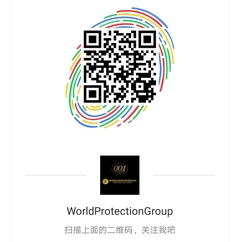Mastering Micro-Influencer Campaigns: Deep Technical Strategies for Niche Audience Engagement 2025
Implementing micro-influencer campaigns targeting niche audiences requires meticulous planning, precise execution, and an expert understanding of the nuances that differentiate successful initiatives from superficial efforts. Building upon the broader framework outlined in How to Implement Micro-Influencer Campaigns for Niche Audience Engagement, this deep-dive explores the specific techniques, step-by-step processes, and advanced considerations that enable brands to leverage micro-influencers as authentic ambassadors capable of fostering long-term loyalty and measurable ROI. We focus on concrete, actionable strategies that go beyond basic guidelines, ensuring that each phase of your campaign is data-driven, technically sound, and finely tuned to your niche market.
1. Selecting the Right Micro-Influencers for Niche Audiences
a) Criteria for Identifying Authentic and Relevant Micro-Influencers
To identify truly authentic micro-influencers within your niche, move beyond surface-level follower counts. Develop a scoring rubric that includes:
- Content Relevance: Ensure their content aligns with your brand values and product domain. Use keyword analysis and content categories.
- Audience Demographics: Use tools like Heepsy or manual profile analysis to verify if their followers match your target demographic in age, location, interests.
- Engagement Authenticity: Analyze comment quality, reply rates, and engagement patterns. Look for consistent, genuine interactions rather than inflated metrics.
- Brand Affinity: Review their previous brand collaborations—are they transparent and aligned with your niche?
“Authentic micro-influencers foster genuine engagement, which is often more valuable than sheer follower volume. Use qualitative analysis of comments and content tone to judge sincerity.”
b) Tools and Platforms for Micro-Influencer Discovery
Leverage specialized platforms that offer granular filtering options tailored for niche markets:
- Upfluence: Combines influencer discovery with CRM features. Use advanced filters such as niche keywords, engagement rates, and follower authenticity.
- Heepsy: Offers real-time follower verification and audience demographics, ideal for identifying micro-influencers with genuine followings in specific niches.
- Manual Search Techniques: Use niche hashtags, community forums, and targeted Google searches to uncover micro-influencers who may not be listed on mainstream platforms.
c) Evaluating Engagement Metrics Versus Follower Count
Prioritize engagement quality over raw follower numbers. Implement the following:
| Metric | Actionable Insight |
|---|---|
| Engagement Rate | Calculate as (Likes + Comments) / Followers. Aim for >3% in niche markets. |
| Comment Quality | Assess the relevance and sincerity of comments. High-quality comments indicate authentic engagement. |
| Follower Growth Trends | Check consistency over time. Sudden spikes may indicate bought followers. |
“Focus on engagement quality metrics. A micro-influencer with 2,000 followers and a 5% engagement rate can outperform a larger account with superficial interactions.”
d) Case Study: How a Beauty Brand Chose Micro-Influencers in the Organic Skincare Niche
A mid-sized organic skincare brand aimed to penetrate a niche community of eco-conscious consumers. They used Heepsy to filter influencers with:
- Relevant hashtags such as #OrganicSkincare, #EcoBeauty
- Follower counts between 1,000-5,000
- Engagement rates above 4%
- Verified audience demographics showing high eco-conscious interest
Subsequently, they conducted manual comment analysis, identifying influencers whose followers actively discussed sustainability. The result was a curated list of 15 micro-influencers, each with authentic engagement, leading to a 35% increase in niche-specific traffic within three months.
2. Crafting a Micro-Influencer Outreach and Collaboration Strategy
a) Personalized Outreach Templates and Messaging Tactics
Effective outreach combines personalization with clarity. Develop a multi-step sequence:
- Initial Contact: Use a brief, personalized message referencing specific content (e.g., “I loved your recent post about sustainable fashion…”). Include influencer’s name, mention shared values, and state your purpose.
- Follow-Up: After 48-72 hours, send a polite reminder emphasizing mutual benefits, e.g., exposure to your audience or exclusive collaborations.
- Final Offer: Clearly specify collaboration deliverables, compensation, and rights, avoiding ambiguity.
“Personalization increases response rates by up to 80%. Reference specific content, values, or past collaborations to demonstrate genuine interest.”
b) Negotiating Deliverables, Compensation, and Content Rights
Implement a clear, flexible negotiation framework:
- Deliverables: Specify post types (e.g., feed, stories, reels), frequency, and deadlines. Use a content brief template with detailed instructions and sample captions.
- Compensation: Negotiate fixed fees, product exchanges, or affiliate commissions. For micro-influencers, consider tiered payment structures based on content complexity.
- Content Rights: Define whether you retain rights for repurposing content. Use licensing agreements to formalize usage rights.
“Formalizing rights and deliverables prevents misunderstandings, especially when scaling campaigns or repurposing content.”
c) Building Long-Term Partnerships versus One-Off Campaigns
Long-term collaborations foster deeper trust and more authentic messaging. Actionable steps include:
- Establish a partnership framework with quarterly review points.
- Offer incentives such as exclusive previews, increased commissions, or co-created product lines.
- Maintain regular communication, providing feedback and performance insights.
“Long-term influencer relationships can yield a 60% higher engagement rate and cost savings over time.”
d) Practical Example: Outreach Sequence for a Micro-Influencer in Sustainable Fashion
Suppose you identify an influencer @EcoChic with 2,300 followers who posts about eco-friendly fashion:
- Day 1: Send a DM: “Hi @EcoChic, I admire your commitment to sustainable fashion. We’re launching a new eco-friendly line and think your voice aligns perfectly. Would you be open to collaborating?”
- Day 3: Follow up via email (if available): “Thanks for connecting! We’d love to offer you our latest collection for review and potential partnership. Here’s a brief outline of what we’re thinking…”
- Day 7: Final message: “Just checking in—if you’re interested, we’d love to discuss details and create something meaningful together.”
Using this sequence, maintain a tone of genuine interest, emphasizing shared values and mutual benefit.
3. Designing Campaigns That Leverage Niche Micro-Influencers’ Authentic Voice
a) Developing Clear Content Guidelines While Allowing Creative Freedom
Provide a detailed content brief that includes:
- Key Messaging: Core brand values, product benefits, and campaign hashtags.
- Tone and Style: Describe the preferred voice (e.g., casual, authoritative) and visual style.
- Do’s and Don’ts: List sensitive topics or formats to avoid.
- Content Format: Specify technical requirements (e.g., video length, image resolution).
Simultaneously, empower influencers to add their personal touch, which enhances authenticity and relatability.
b) Incorporating User-Generated Content and Micro-Influencers’ Personal Stories
Encourage influencers to share their personal experiences with your product, such as:
- Before-and-after stories demonstrating product efficacy.
- Day-in-the-life content integrating your brand naturally.
- Authentic testimonials that highlight specific benefits aligned with their niche.
This approach fosters trust and creates a narrative that resonates more deeply with niche audiences.
c) Using Campaign Hashtags and Tagging Strategies to Maximize Reach
Establish a set of branded hashtags and niche-specific tags. For example:
- Branded Hashtag: #EcoChicCollab
- Niche Tags: #SustainableFashion, #EcoStyle
Instruct influencers to:
- Use the branded hashtag in every post.
- Tag your brand’s official account and relevant niche accounts or communities.
- Encourage followers to participate using the hashtags.
This amplifies campaign visibility and encourages user participation, creating a viral effect within the niche.
d) Example Workflow: From Brief to Content Approval in a Local Food Niche
Suppose your campaign promotes organic, locally-sourced ingredients:
- Step 1: Share a detailed brief with content themes, visual style examples, and key messages.
- Step 2: Influencers draft initial ideas or storyboards and submit for review.
- Step 3: Provide constructive feedback, emphasizing authenticity and storytelling elements.
- Step 4: Influencers finalize content, ensuring compliance with guidelines, then publish.
- Step 5: Collect original content for repurposing and further amplification.
Use collaboration tools like Google Drive or Asana to streamline this workflow, ensuring transparency and accountability.
4. Implementing Technical and Tactical Elements for Effective Campaigns
a) Setting Up Tracking Links and UTM Parameters for Precise ROI Measurement
Use UTM parameters systematically to track traffic and conversions. For example, in your campaign URLs:
https://yourbrand.com/product?utm_source=instagram&utm_medium=influencer&utm_campaign=sustainable_fashion
Create custom UTM builder templates for each influencer, incorporating unique identifiers to differentiate channels and partnerships. Use tools like Google’s Campaign URL Builder for accuracy.
b) Using Social Listening Tools to Monitor Campaign Sentiment and Engagement
Implement tools such as Brandwatch, Sprout Social, or Mention to track mentions, sentiment, and hashtag performance in real-time. Key steps include:
- Set up specific keyword alerts for campaign hashtags and brand mentions.
- Monitor sentiment shifts and address negative comments proactively.
- Identify organic brand advocates emerging within your niche community.
“Real-time social listening enables nimble adjustments, preventing reputation damage and capturing emerging opportunities.”
<h3 style=”margin-top:1.5em; font-size:1.






Leave a Reply
Want to join the discussion?Feel free to contribute!